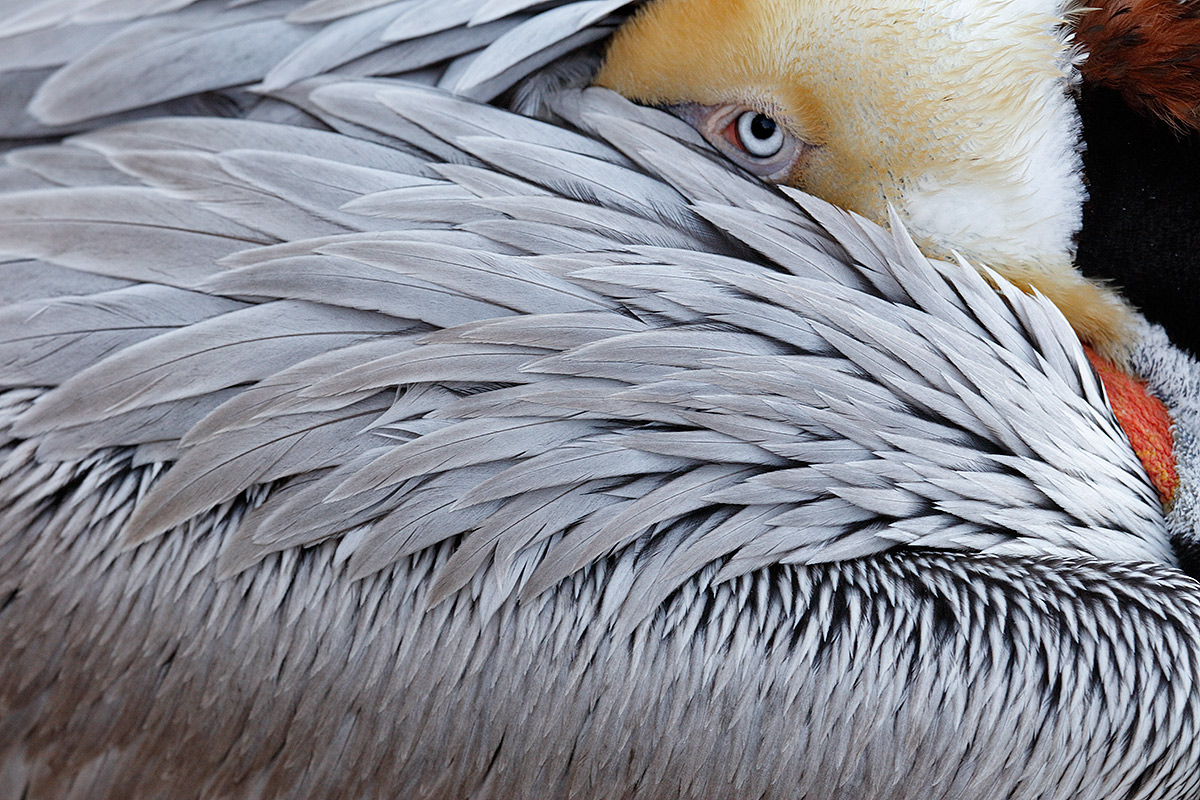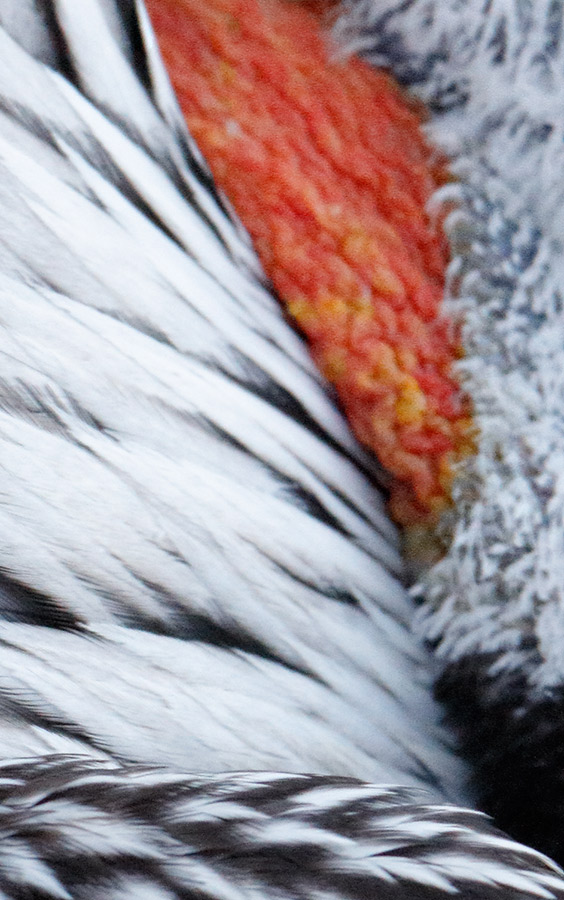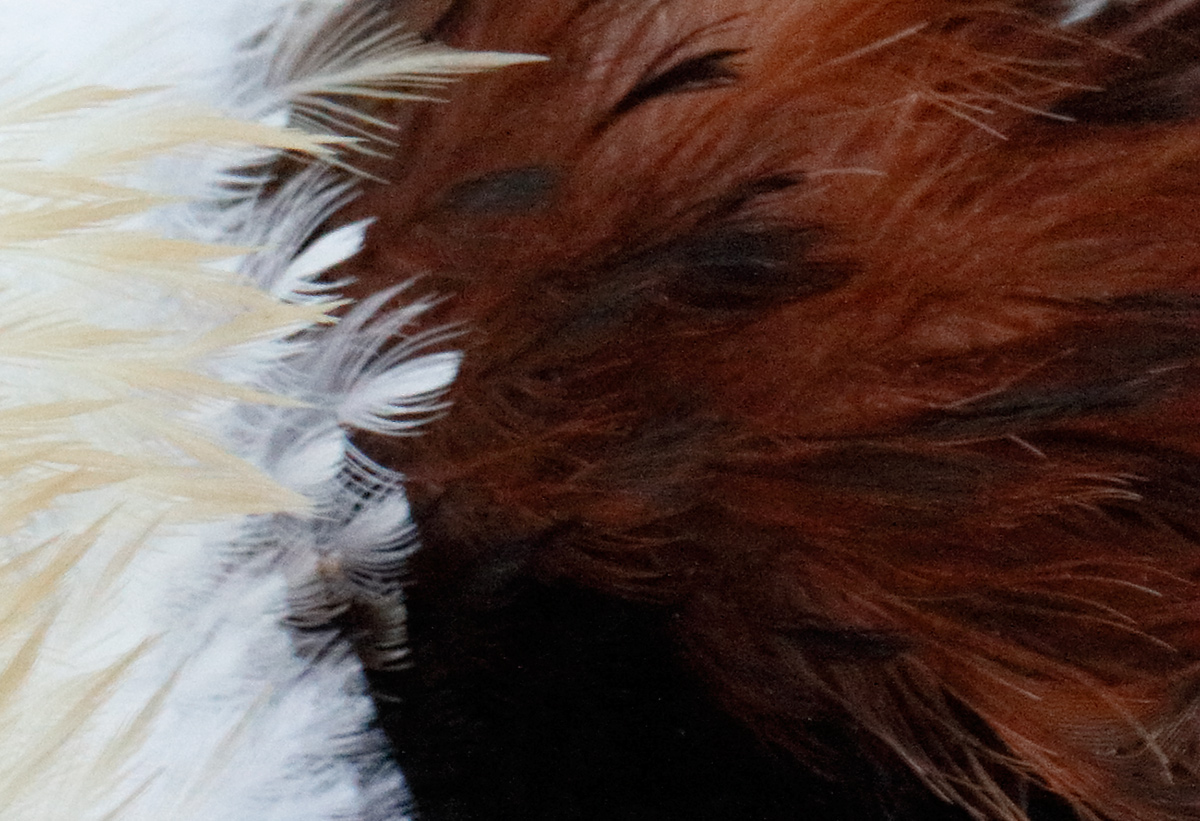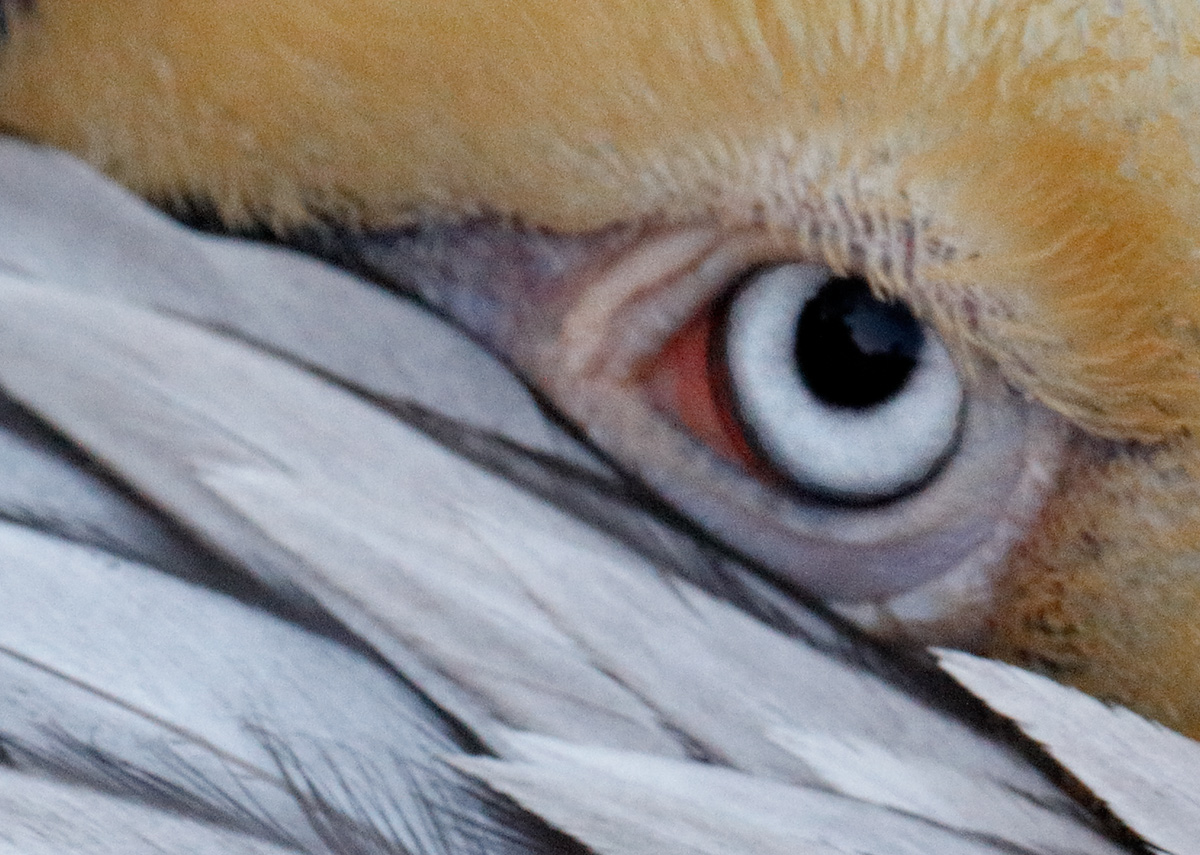What’s Up?
Scoff at Cold Thermogenesis and ice baths if you like, but the facts are that while I was in San Diego I was getting up every 45 minutes to an hour for a pit stop and sleeping–if you could even call it that–only five to six hours. Last night, after my fourth day in a cold pool–about 73 degrees, and after four 6pm ice baths, I slept eight full hours with just one pit stop.
I spent most of yesterday working on a South Georgia article for Nature Photographer magazine. After I finish that up this morning I will be doing some more work on my coming soon Southern Ocean Photography Guide and working a bit on the After-Conversion Photoshop Guide that I will be doing with Arash Hazeghi. (See more on that below.)
I am looking forward to the two NFL games today. I am hoping that Carolina wins but would be OK if the Cardinals beat them. I will be investing all of my rooting energy against the hated Patriots. Just why did Pretty Boy Tom Brady destroy his cell phone before being investigated by the league??? Go Peyton!

B&H
B&H was the primary exhibition sponsor of my solo, career retrospective, 67-image exhibit at the San Diego Natural History Museum. Thank them (and me, for the work I do on the blog) by clicking on the logo link above to shop for camera bodies and lenses.
|
This image was created at La Jolla, CA with the Induro GIT 304L/Mongoose M3.6-mounted Canon EF 500mm f/4L IS II USM lens, the Canon Extender EF 1.4X III, and the Canon EOS 5DS R. ISO 1600. Evaluative metering +1/3 stop: 1/60 sec. at f/8. AWB. Should have been +1 stop… Center AF point/AI Servo Expand/Rear Focus AF as framed was active at the moment of exposure. Click here to see the latest version of the Rear Focus Tutorial. Click on the image to see a larger version. Brown Pelican scapulars viewed from overhead with eye visible |
ISO 1600 5DS R Noise
Before scrolling down to look at the three tight crops below, consider the noise levels that you see at ISO 1600 in the image as presented above–please click on the image to view it larger if you wish. The only obvious noise that I am seeing is in the rather “mushy” area in the lower left corner. That “mushy” look may not be noise at all as that area is somewhat shadowed and thus a bit underexposed… Please leave a comment and let us know what you are seeing as far as noise in the image as presented above.
Full Frame
The challenge for me here while shooting almost straight down from above the pelican was to completely fill the frame with feathers while totally eliminating any evidence of the reddish cliff background in the corners. This image is full frame: I was able to get what I wanted.
Thanks Carlotta for Teaching an Old Dog a New Trick
I first met Carlotta Grenier on one of the 2015 Bosque IPTs. She had so much fun that she signed up for the San Diego IPT that turned out to be a blast. During the image critiquing session she shared one image that captivated me. She had shot straight down at the head and back of a sleeping pelican. Over the years I had done some similar stuff in the same general area but had not shot straight down as she had. So thanks Carlotta for opening my eyes.
Rather than rear focusing on the bird’s eye, I went with the active AF point on the scapulars as I wanted those feathers absolutely sharp. I figured that t f/8 that I had a chance of getting the eye sharp. I succeeded half way but a Contrast Mask rendered the eye more than sharp enough for me. With the eye somewhat in a shaded area I did some Eye Doctor work by making the pupil blacker and making the iris whiter, all via small Quick Masks followed by Curves on a Layer (Control + M). The Eye Doctor work really brought the image to life.
You say Car-LOT-uh…
At the beginning of the IPT I kept mispronouncing Carlotta’s name by saying Car-LOW-tah. Once she corrected me a few times (in good fun I might add), I had it down pat, Car-LOT-uh. The problem was that others had become confused. Folks who had gotten her name right at first were now calling her Car-LOW-tah and even Car-LEE-tah. Everyone, including Carlotta, had a good laugh. And a great time on the IPT.
Tight crop #1: The unsharpened crop here approximates a 100% crop. It was downsized just a bit to 900 pixels tall. The 850kb file was optimized to < 395 kb and is presented here at 466 pixels wide. |
Tight crop #2: The unsharpened crop here approximates a 100% crop. That was cropped to 1200 pixels wide. The approximately 600 kb file was optimized to < 395 kb. It is presented here at 800 pixels wide. |
Tight crop #3: The unsharpened crop here also approximates a 100% crop. It was downsized just a bit to 1200 pixels wide. The 600kb file was optimized to < 395 kb and is presented here at 800 pixels wide. |
First, My Comments on Noise
I must admit that since I began doing my conversions in DPP 4 and using the Chrominance and Luminance Noise Reduction Values developed by Arash Hazeghi as summarized on page 28 of the DPP 4 RAW Conversion Guide. Heck, I was never really concerned about noise even before I started using DPP. That may–in part–be due to the fact that I have long minimized noise by pushing my exposure far to the right in the field.
Right now I am editing Arash’s “After-Conversion Photoshop Guide” (my working title) and am learning a lot more about noise and about the Neat Image noise reduction plug-in. Arash recommends Neat Image Pro so that is what I installed on my MacBook Pro yesterday. I still have lots of work to do in that area so I will say succinctly that I am no expert in the noise department (even though I often peek at big enlargements of small areas of an image).
Fine Feather Detail, Image Quality, and Noise Questions
If and only if you are familiar with looking at 100% crops you are invited to comment on image quality, chrominance (color) noise, luminance noise, and on the fine feather detail that you are seeing in the three tight crops above.
2017 San Diego 4 1/2-DAY BIRDS AS ART Instructional Photo-Tour (IPT) JAN 11 thru and including the morning session on JAN 15: 4 1/2 days: $1999.
(Limit: 10/openings 8)
Meet and Greet at 7:00pm on the evening before the IPT begins; Tuesday 1/10/17.
Join me in San Diego to photograph the spectacular breeding plumage Brown Pelicans with their fire-engine red and olive green bill pouches; Brandt’s and Double-crested Cormorants; breeding plumage Wood and Ring-necked Duck; other duck species possible including Lesser Scaup, Redhead, and Surf Scoter; a variety of gulls including Western, California, and the gorgeous Heerman’s, all in full breeding plumage; shorebirds including Marbled Godwit, Willet, Sanderling and Black-bellied Plover; many others possible including Least, Western, and Spotted Sandpiper, Whimbrel, Black and Ruddy Turnstone, Semipalmated Plover, and Surfbird; Harbor Seals (depending on the current regulations) and California Sea Lions; and Bird of Paradise flowers. And as you can see by studying the two IPT cards there are some nice bird-scape and landscape opportunities as well.
With gorgeous subjects just sitting there waiting to have their pictures taken, photographing the pelicans on the cliffs is about as easy as nature photography gets. With the winds from the east almost every morning there is usually some excellent flight photography. And the pelicans are almost always doing something interesting: preening, scratching, bill pouch cleaning, or squabbling. And then there are those crazy head throws that are thought to be a form of intra-flock communication.
Did I mention that there are wealth of great birds and natural history subjects in San Diego in winter?
For complete 2017 San Diego ITP info please click here.
Please Remember to use our Affiliate Links 🙂
To show your appreciation for my continuing efforts here, we ask, as always, that you get in the habit of using my B&H affiliate links on the right side of the blog for all of your photo and electronics purchases. Please check the availability of all photographic accessories in the BIRDS AS ART Online Store, especially the Mongoose M3.6 tripod heads, Gitzo tripods, Wimberley heads and plates, LensCoats and accessories, and the like. We sell only what I have used, have tested, and can depend on. We will not sell you junk. We know what you need to make creating great images easy and fun. And we are always glad to answer your gear questions via e-mail. I just learned that my account was suspended during my absence; it should be up and running by Monday at the latest.
I would of course appreciate your using our B&H affiliate links for all of your major gear, video, and electronic purchases. For the photographic stuff mentioned in the paragraph above we, meaning BAA, would of course greatly appreciate your business. Here is a huge thank you to the many who have been using our links on a regular basis and visiting the BAA Online store as well.
Be sure to like and follow BAA on Facebook by clicking on the logo link upper right. Tanks a stack!
Typos
In all blog posts and Bulletins, feel free to e-mail or to leave a comment regarding any typos or errors. Just be right 🙂


















Since the 100% crops are unsharpened and a bit “soft”, any noise present will also be blurry so it’s hard to say anything about noise in the photos.
I believe that the relative unsharpness is caused by the ISO 1600 rather than by the big crop or the fact that the image is unsharpened. Why do I say that? See the two unsharpened 100 % crops here at ISO 400 and ISO 500. They are plenty sharp with excellent fine detail.
Hi Artie,
Hardly any comments for this blog post. I am also unqualified so, no comment on noise etc but heck, flip that’s a sweet image. And the detail available in the cropped portions is astonishing .
When viewed at a distance this fine detail gives the image a special character.
Love the composition and the colours.
Regards
David.
Oops should have refreshed the page first.
Looking for the edit button.
Evidently many more reply than I realised.
But the brown in the lower left, rather than being “mushy” is the true colors of the bird, therefore necessary, in my opinion.
Rooting against Tom Brady is like rooting against you. He is the best.
Hi, Artie. I never see–at least, I never notice–noise in any of your images, today’s included. It’s wonderful. I do see some noise in all three of the 100% crops. I am pretty confident that I would not see any noise in the whole image in all three cases.
By the way, I have been enjoying Franz Lanting’s wonderful book “Penguin.” It is filled with beautiful photographs, in some of which you can see noise (or grain, since he was using film). I find it doesn’t bother me at all. For me, if the noise is confined to the background, I can live with it if it’s not excessive. With your images, though, I never even THINK about noise unless you specifically ask, and then I always am impressed by its absence. 🙂
Hello Artie:
As a Bostonian I cannot leave unanswered your dissing my favorite football team. I would like to point out that you and Tom Brady have a lot in common. He is arguably the best quarterback to ever have played in the NFL. Many would say the same about you in the realm of bird photography. He is intensely focussed and works very hard to achieve his goals. Sound familiar? He eschews conventional medicine and nutrition and has is own alternate eating and training style. Also familiar? Many say he is in remarkable shape for a 37 year old NFL quarterback and has many more years to go. I suspect you are the same. So may the better team win today’s game. I think, well I hope, I know which team that will be. 🙂 Bob
Hey Bob, How did that game turn out ? a
ps: thanks for comparing me to him. 🙂 I do respect him I just don’t like him.
Fantastic composition and color. I have shot thousands of pelicans and never come close to something this arresting.
Sitting in a dark hotel room with an iPad Mini 4, I see some luminance noise when I zoom all the way in but no chrominance noise. But not at all objectional in normal viewing. I’m not very noise sensitive, I thought the original 7D was OK at 800, Pat hated it at 400.
The resolution of the 5DsR is impressive. I don’t know how far you were from the Pelican but on the 100% crop you can clearly see individual barbules on some feathers. I would guess these to be 1 mm or less in diameter……amazing, especially with a teleconverter.
Thanks Joel. Not to mention ISO 600 and a shutter speed of 1/60 sec. with the tripod perched precariously on the edge of the cliff… a
ps: it was probably about 13 feet or less down to the bird. MFD for the 500 II is an impressive 3.7 meters or less than 12 feet, 2 inches.
ISO 1600, no? Even more impressive.